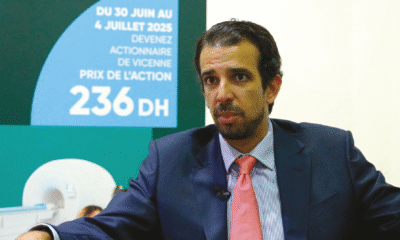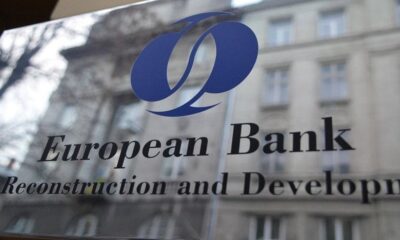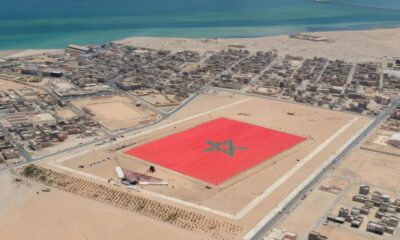International
Moroccan Nuclear Project, an Ambition of Several Decades
In Morocco, interest in uranium and nuclear energy dates back to the 1940s. Studies have been launched since the early 1980s for the construction of a nuclear power plant. Today, having changed its approach, the Kingdom is very close to its goal.

Morocco’s nuclear ambitions are not new. It is a long story, literally. During the 1940s, uranium exploration missions were conducted in Morocco but without conclusive results.
In 1953, the Moroccan Society for Mining Research and Exploitation (Somarem), dedicated to this activity, was created. The Azegour mine, located in the Al-Haouz province, exploited under the French protectorate, had already produced about 120 tons of uranium as a by-product. Today, this site is attracting attention again, notably through a partnership with international operators.
After production stopped at this mine, Morocco turned to another resource, phosphates, still exploiting uranium as a secondary product. The phosphate company Prayon, based in Belgium and jointly owned by OCP and Wallonie Entreprendre, recovered about 690 tons of uranium from Moroccan phosphate rocks between 1975 and 1999.
Due to price drops, production was no longer commercially viable. Indeed, uranium traded between 8 dollar and 12 dollar per pound from January 1989 to December 1995, then from May 1997 to July 2003. Production costs were between 10 dollar and 55 dollar per pound.
Currently, the activity is becoming interesting again. The pound is trading at just under 70 dollar , while the production cost of yellowcake from phosphoric acid is between 44 dollar and 61 dollar per pound, with a downward trend as extraction technology evolves.
Alongside its ore exploration and extraction program, Morocco has harbored a legitimate ambition to acquire civil nuclear technology for electricity production. After Independence, in the 1960s, the Kingdom attempted to acquire a nuclear reactor with American assistance under the “Atoms for Peace” program.
However, these negotiations failed due to the technological and geopolitical conditions of the time. It is worth recalling that at the same time, the American base in Kenitra was effectively closed and evacuated by the US military, with all American bases in Morocco evacuated by 1963.
Change of Approach
In 1984, with the creation of the National Center for Energy, Nuclear Science and Technology (Cnesten), as part of establishing the necessary structures for the national nuclear program, Morocco launched feasibility studies and site selection for its first nuclear power plant.
The Sidi Boulbra region, located on the Atlantic coast between Safi and Essaouira, has been identified as a promising site for a nuclear plant since then. Feasibility studies conducted later in 1994 and reaffirmed between 2002 and 2005 validated the technical, economic, and safety viability of the project. The Kingdom planned to have its plant operational by 2020.
Meanwhile, Morocco acquired a research reactor, the MA-R1 TRIGA, located at Cnesten in Maâmoura. This 2 MW experimental reactor, built between 2004 and 2006 with support from the International Atomic Energy Agency (IAEA) and technology transfer from France and the United States, is a vital installation.
It employs about 260 people, including engineers and researchers, and has provided Morocco with a crucial technical and scientific base necessary for its transition to large-scale production.
This hands-on learning approach through research facilities “constitutes a fundamental step for any nation aspiring to develop a robust civil nuclear program, thus reducing future dependence on external expertise for operation and maintenance,” as highlighted in various reports on the subject.
This focus on strengthening internal capacities indicates that “Morocco favors autonomy and the development of a local nuclear ecosystem.” This approach has been adopted for renewable energies, green mobility, green hydrogen, the railway industry, military industry, and pharmaceuticals, among others.
This approach will undoubtedly influence its choice of international partners, favoring those offering significant technology transfers, joint research programs, and comprehensive training initiatives rather than simple turnkey solutions.
A Technology Already Mastered
The use of peaceful nuclear applications nationally is increasing significantly across various economic and social sectors. These applications are used for medical, industrial, agricultural, research, hydrological, mining, and even security monitoring purposes.
Examples include:
- Public health: nuclear radiological diagnostics, nuclear medicine, and radiotherapy;
- Industry: gamma imaging devices, radiological measurement, and detection;
- Agriculture: sustainable natural resource management, soil erosion assessment, conservation practices efficiency, efficient use of irrigation water and fertilizers, food security;
- Security monitoring: customs controls, baggage screening;
- Education and scientific research: activities using X-rays, diffraction, spectrometry, X-ray generators, and many low-activity radioactive sources;
- Water: through investigative programs related to water resources. Radioisotopic hydrology techniques provide information on water age (renewable or fossil), aquifer recharge and flow mechanisms, origin of groundwater salinity, effectiveness of artificial recharge, water quality, and pollution sources.













